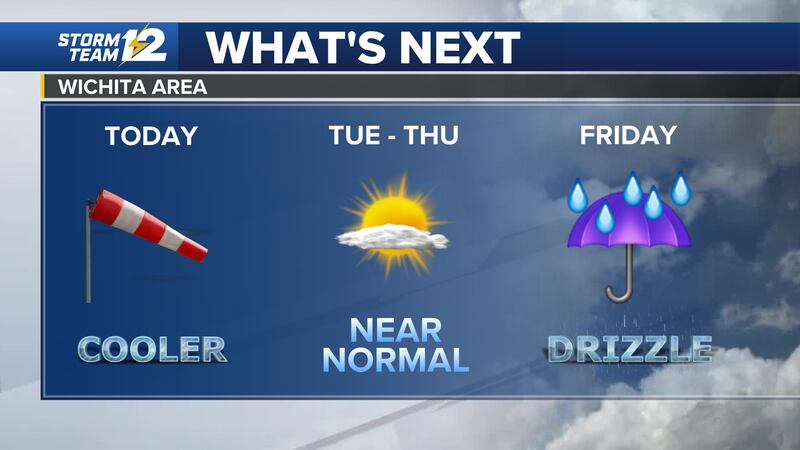
As we navigate our daily lives, one of the most crucial pieces of information that influences our plans is simply this: what’s the weather tomorrow? Whether you’re planning a weekend getaway, scheduling errands, or deciding what to wear in the morning, knowing the forecast can make all the difference. In this article, we’ll explore how weather predictions are made, the significance of accurate forecasts, and tips for staying updated on changing conditions.
Understanding Weather Forecasts

Weather forecasting is a complex process that involves multiple disciplines, techniques, and tools to predict atmospheric conditions. By understanding how these forecasts are created, we can better appreciate their reliability and relevance in our daily lives.
The Science Behind Weather Predictions

Weather predictions rely heavily on meteorology, which is the study of the atmosphere and its phenomena. Meteorologists use a combination of satellite data, radar, and ground-based observations to create models predicting future weather events.
Satellites provide real-time images and data about cloud cover, temperature, and precipitation from space. This information is crucial as it helps meteorologists see large-scale weather patterns that influence local conditions. Radar systems further enhance the forecast by tracking precipitation intensity and movement, allowing meteorologists to predict storms with greater accuracy.
In addition to observational data, meteorologists utilize advanced computer models that simulate atmospheric behavior. These models take into account various factors such as air pressure, temperature, humidity, and wind patterns. By running simulations, forecasters can predict how these elements will interact over time, ultimately giving us insight into what’s the weather tomorrow.
Importance of Accurate Weather Forecasting

Accurate weather forecasting plays a pivotal role in numerous sectors such as agriculture, aviation, emergency services, and everyday activities. Farmers depend on precise weather predictions to determine planting and harvesting times, thereby affecting food supply chains.
Air travel also relies on up-to-date weather information to ensure passenger safety. Pilots must be informed of potential turbulence, thunderstorms, or heavy winds before taking off. Moreover, emergency management agencies utilize weather forecasts to prepare for natural disasters like hurricanes or floods, ensuring timely evacuations and resource distribution.
Beyond these sectors, individual citizens benefit from reliable forecasts by planning their day accordingly. Whether it’s dressing appropriately, scheduling outdoor activities, or planning for drive times, knowing what’s the weather tomorrow ensures that we can plan our days more effectively.
How to Interpret Weather Reports

When you check the weather forecast, you often encounter various terminologies and symbols that can be confusing at first glance. Understanding these terms can enhance your ability to interpret forecasts accurately.
Key components of a weather report typically include:
- Temperature: Usually presented as high and low readings, indicating the expected warmest and coldest points in a 24-hour period.
- Precipitation: This indicates whether rain, snow, sleet, or hail is expected, along with estimates of accumulation.
- Wind Speed and Direction: Knowing how fast and from which direction the wind will blow is essential, especially for outdoor activities.
- Humidity: This tells you how much moisture is in the air, impacting how hot or cold it feels outside.
By familiarizing yourself with these reports, you’ll better gauge what’s the weather tomorrow and adjust your plans accordingly.
The Role of Technology in Weather Forecasting

In recent years, technology has revolutionized the way we receive weather forecasts. From mobile applications to smart home devices, technology makes staying informed easier and more convenient.
The Impact of Mobile Applications
Mobile applications have transformed how we access weather information. With apps available for both iOS and Android devices, users can receive real-time updates, severe weather alerts, and even location-specific forecasts.
Many of these applications allow for customization, enabling users to set notifications for specific weather conditions. For example, if you’re planning a picnic and want to know if rain is on the horizon, you can receive alerts when there’s a significant chance of precipitation in your area.
Moreover, apps often feature interactive radar maps that let you visualize storm tracks, helping you understand the likelihood of inclement weather. By utilizing these apps, you can always stay one step ahead when it comes to what’s the weather tomorrow.
Smart Home Devices and Weather Forecasting
Smart home technology has also enhanced our ability to manage and respond to weather changes. Devices like smart thermostats can adjust temperatures based on upcoming weather forecasts, improving comfort while potentially reducing energy costs.
Some smart home systems are equipped with weather stations that monitor environmental conditions right in your backyard. These systems can track parameters like temperature, humidity, and barometric pressure, offering hyper-local forecasts. This level of detail can significantly improve your understanding of what’s the weather tomorrow, especially in regions where conditions change rapidly.
Social Media and Community Forecast Sharing
Social media platforms have become unexpected yet valuable sources of weather information. Many meteorologists actively share forecasts, weather warnings, and insights through Twitter, Facebook, and Instagram. This immediacy allows users to stay informed about changing conditions without waiting for traditional news broadcasts.
Additionally, community-driven weather sharing networks enable individuals to report local conditions and environmental changes. Citizen scientists contribute real-time data, enriching the overall pool of weather information and providing localized insights into what’s the weather tomorrow.
Preparing for Changing Weather Conditions

The unpredictability of weather can often catch us off-guard. Developing strategies to prepare for sudden changes can help us navigate life’s surprises seamlessly.
Dressing Appropriately for Various Conditions
One of the simplest ways to prepare for changing weather is to dress appropriately. Layering clothing provides flexibility, allowing you to adapt to fluctuating temperatures throughout the day.
For instance, if the morning forecast indicates cool temperatures but sunny skies by afternoon, wearing layers gives you the option to shed clothing as conditions warm up. Additionally, investing in waterproof gear ensures you’re prepared for unexpected rain, keeping you comfortable no matter what the weather tomorrow may bring.
Planning Activities Around the Weather
Planning your weekly schedule based on the weather can significantly enhance your enjoyment of outdoor activities. If you know the forecast predicts sunshine and mild temperatures for the weekend, consider organizing hikes, picnics, or beach outings during those days.
Conversely, when inclement weather is expected, it’s advisable to have indoor plans ready. Book tickets for museums, theaters, or other entertainment venues to ensure you can still enjoy your day despite the dreary weather.
Safety Measures During Severe Weather
Safety should always come first when facing severe weather conditions. Familiarize yourself with warning systems in your area so you can react quickly in emergencies.
Having an emergency kit on hand is vital. Include essentials such as bottled water, non-perishable food, flashlights, batteries, first-aid supplies, and weather radio. Additionally, establish a communication plan with friends and family so that everyone knows how to reach each other during crises.
Staying informed and prepared enables us to adapt to whatever the weather tomorrow might bring.
Frequently Asked Questions

What is the best way to check the weather?
Using reliable mobile applications, websites, or local news broadcasts can provide consistently accurate weather updates.
Are weather apps really accurate?
Most modern weather apps utilize sophisticated modeling and data from various sources, making them quite accurate. However, minor discrepancies can occur due to rapid weather changes.
How does climate change affect weather forecasting?
Climate change alters long-term weather patterns, requiring continuous adjustments in forecasting methods to accommodate new trends and extreme weather events.
Can I trust social media for weather updates?
While many certified meteorologists utilize social media, it’s essential to verify information through reputable sources to avoid misinformation.
How far in advance can weather predictions be accurately made?
Typically, short-term forecasts (1-3 days) are more accurate than long-term forecasts (up to 7-14 days). Beyond this range, uncertainties increase significantly.
Conclusion
)
Understanding what’s the weather tomorrow goes beyond merely checking the forecast; it’s about embracing the knowledge and tools at our disposal to enhance our daily lives. With advancements in technology and a clearer comprehension of weather science, we can make informed decisions that impact everything from our wardrobes to our weekend plans. So the next time you find yourself pondering the weather, remember the depth of information available to you and how it can enrich your experience.
OTravel Vietnam | Ready to Start Your Adventure in Vietnam
• Phone: (+84) 816 616 466 (WhatsApp/ Zalo/ Viber)
• Email: OTravelVietnam@gmail.com
• Website: www.otravel.vn
• Facebook: facebook.com/OTravelVietnam / facebook.com/OTravelcom
At OTravel Vietnam, we provide seamless travel solutions to help you explore the beauty of Vietnam. From personalized tours to unforgettable experiences, we ensure every journey is memorable. Contact us today and let your adventure begin!”







